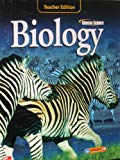
Concept explainers
Introduction :
Cystic fibrosis is the common recessive genetic disorderthat affects the glands producing mucus, sweat glands, and digestive enzymes. In this condition, chloride ions are not absorbed into the cells of a person. Instead, their chloride ions are excreted in the sweat. With insufficient chloride ions in cells, water can not diffuse from cells. This results insecretion of thick mucus. The thick mucus blocks organs of digestive and respiratory system.
Answer to Problem 4A
Correct answer :
The correct answer is option (C) lack of skin pigments.
Explanation of Solution
Explanation/justification for the correct answer :
Option (C) is lack of skin pigments. Skin pigment depends on the amount of production and distribution of melanin pigment. So, lack of skin pigment is not a characteristic of a person with cystic fibrosis. Thus, the correct answer is option (C).
The explanation for the incorrect answer :
Option (A) is chloride channel defect. It is a characteristic of a person with cystic fibrosis. Thus, this is an incorrect option.
Option (B)is digestive problems. The thick mucus due to cystic fibrosis clogs the ducts in the pancreas and interrupts digestion. The digestive problem is a characteristic of a person with cystic fibrosis. Thus, this is an incorrect option.
Option (D) is recurrent lung infection. Patients with cystic fibrosis are at a higher risk of infection in their lungs. So, recurrent lung infection is a characteristic of a person with cystic fibrosis. Thus, this is an incorrect option.
Chapter 11 Solutions
Glencoe Science Biology, Teacher Edition, Hardcover Book Only
Additional Science Textbook Solutions
Campbell Biology: Concepts & Connections (9th Edition)
Campbell Essential Biology (7th Edition)
Human Physiology: An Integrated Approach (8th Edition)
Physics for Scientists and Engineers: A Strategic Approach, Vol. 1 (Chs 1-21) (4th Edition)
Cosmic Perspective Fundamentals
Applications and Investigations in Earth Science (9th Edition)
- Based on your results from the Mannitol Salt Agar (MSA) media, which of your bacteria were mannitol fermenters and which were not mannitol fermenters?arrow_forwardhelp tutor pleasearrow_forwardQ8. A researcher wants to study the effectiveness of a pill intended to reduce stomach heartburn in pregnant women. The researcher chooses randomly 400 women to participate in this experiment for 9 months of their pregnancy period. They all need to have the same diet. The researcher designs two groups of 200 participants: One group take the real medication intended to reduce heartburn, while the other group take placebo medication. In this study what are: Independent variable: Dependent variable: Control variable: Experimental group: " Control group: If the participants do not know who is consuming the real pills and who is consuming the sugar pills. This study is It happens that 40% of the participants do not find the treatment helpful and drop out after 6 months. The researcher throws out the data from subjects that drop out. What type of bias is there in this study? If the company who makes the medication funds this research, what type of bias might exist in this research work?arrow_forward
- What is behavioral adaptarrow_forward22. Which of the following mutant proteins is expected to have a dominant negative effect when over- expressed in normal cells? a. mutant PI3-kinase that lacks the SH2 domain but retains the kinase function b. mutant Grb2 protein that cannot bind to RTK c. mutant RTK that lacks the extracellular domain d. mutant PDK that has the PH domain but lost the kinase function e. all of the abovearrow_forwardWhat is the label ?arrow_forward
- Can you described the image? Can you explain the question as well their answer and how to get to an answer to an problem like this?arrow_forwardglg 112 mid unit assignment Identifying melting processesarrow_forwardGive only the mode of inheritance consistent with all three pedigrees and only two reasons that support this, nothing more, (it shouldn't take too long)arrow_forward
 Human Anatomy & Physiology (11th Edition)BiologyISBN:9780134580999Author:Elaine N. Marieb, Katja N. HoehnPublisher:PEARSON
Human Anatomy & Physiology (11th Edition)BiologyISBN:9780134580999Author:Elaine N. Marieb, Katja N. HoehnPublisher:PEARSON Biology 2eBiologyISBN:9781947172517Author:Matthew Douglas, Jung Choi, Mary Ann ClarkPublisher:OpenStax
Biology 2eBiologyISBN:9781947172517Author:Matthew Douglas, Jung Choi, Mary Ann ClarkPublisher:OpenStax Anatomy & PhysiologyBiologyISBN:9781259398629Author:McKinley, Michael P., O'loughlin, Valerie Dean, Bidle, Theresa StouterPublisher:Mcgraw Hill Education,
Anatomy & PhysiologyBiologyISBN:9781259398629Author:McKinley, Michael P., O'loughlin, Valerie Dean, Bidle, Theresa StouterPublisher:Mcgraw Hill Education, Molecular Biology of the Cell (Sixth Edition)BiologyISBN:9780815344322Author:Bruce Alberts, Alexander D. Johnson, Julian Lewis, David Morgan, Martin Raff, Keith Roberts, Peter WalterPublisher:W. W. Norton & Company
Molecular Biology of the Cell (Sixth Edition)BiologyISBN:9780815344322Author:Bruce Alberts, Alexander D. Johnson, Julian Lewis, David Morgan, Martin Raff, Keith Roberts, Peter WalterPublisher:W. W. Norton & Company Laboratory Manual For Human Anatomy & PhysiologyBiologyISBN:9781260159363Author:Martin, Terry R., Prentice-craver, CynthiaPublisher:McGraw-Hill Publishing Co.
Laboratory Manual For Human Anatomy & PhysiologyBiologyISBN:9781260159363Author:Martin, Terry R., Prentice-craver, CynthiaPublisher:McGraw-Hill Publishing Co. Inquiry Into Life (16th Edition)BiologyISBN:9781260231700Author:Sylvia S. Mader, Michael WindelspechtPublisher:McGraw Hill Education
Inquiry Into Life (16th Edition)BiologyISBN:9781260231700Author:Sylvia S. Mader, Michael WindelspechtPublisher:McGraw Hill Education





